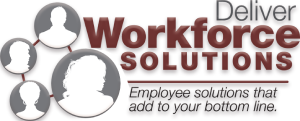
The modern workplace is a vibrant mix of different generations, with Baby Boomers, Gen X, Millennials, and Gen Z all working side by side.
Each generation is a powerful asset, bringing unique perspectives shaped by their upbringing and life experiences to the team.
But while a multigenerational workforce combines a wealth of experience and perspectives, it can also lead to communication and collaboration challenges.
Luckily, with a little understanding, the different strengths of each generation can be harnessed to create a stronger, more innovative team.
This guide will explore generational diversity and each age group’s unique contribution to the workplace. We’ll also discuss the challenges of a multigenerational workforce and strategies for tackling these issues head-on.
What is generational diversity, and why is it important?
Generational diversity is the coexistence of people from multiple generations in the workplace. Each group is shaped by the distinct historical events, cultural norms, and societal changes they’ve lived through.
This mix is essential, bringing together various viewpoints, life experiences, and abilities to make the workplace more interesting and to spark new ideas.
Let’s break down the 4 generations currently present in the workplace:
- Baby Boomers (born 1946–1964): Born in the post-WWII era, Baby Boomers witnessed a period filled with hope, economic growth, and remarkable milestones like space exploration.
- Generation X (born 1965–1979): Often raised in households with divorced or working parents, Gen Xers were the first to embrace the dawn of personal computers and the Internet. This shaped their views on technology and finding the right balance between work and life.
- Millennials (Gen Y) (born 1980–1995): Millennials grew up during a time of economic expansion, and their parents encouraged them to explore entrepreneurship. This upbringing fostered their innovative thinking and fueled their quest for meaningful work.
- Gen Z (born 1996–2013): Gen Z grew up in the aftermath of 9/11, facing economic challenges and a world focused on safety. As the first real ‘digital natives’, these younger workers are experts at blending their tech skills with a strong drive to innovate and create.
As an employer, recognizing and valuing each generation’s unique skills and perspectives can greatly boost teamwork, innovation, and overall productivity.
What are the struggles in the workforce among different generations?
It isn’t always smooth sailing when employees from diverse age groups work alongside each other. Strong opinions and generational differences can cause friction. Some common examples of this include:
- Lack of understanding and resistance to learning from others
When it comes to generational diversity, employees can often struggle to understand or learn from their older or younger colleagues. This happens because of different backgrounds, communication styles, and resistance to change.
- Varied views on authority and work/life balance
Every generation has its own take on authority and work. Baby Boomers often respect traditional hierarchies and prioritize job stability. Millennials and Gen Z, on the other hand, are more focused on teamwork, collaboration, and a better work/life balance.
These differences can sometimes lead to friction when defining roles or making decisions.
- Different communication styles and technology preferences
Each generation has its own communication style and relationship with technology. Older generations may prefer face-to-face communication and traditional methods, while younger employees are generally more comfortable with digital communication methods and technology in general.
Strategies for embracing generational diversity
- Encourage collaboration on products and services
Applying generational knowledge to developing products and services enhances their relevance and appeal to different age groups. It also fosters understanding and cooperation between older and younger generations as they work side by side, sharing their unique insights and perspectives.
- Adapt systems and processes
Each generation has its own way of doing things, and rigid systems don’t always fit everyone’s style. You can honor individual preferences by offering flexibility within standard procedures while reaching your objectives.
This approach allows people to work in a way that feels right for them and increases their sense of belonging.
- Resolve staff conflict
It’s important to foster open and honest conversations to handle conflicts among team members. This can be easily done by encouraging everyone to share their thoughts while respecting different perspectives.
Teams can collaborate to find solutions considering everyone’s viewpoints, leading to better products and services and promoting a more positive workplace culture.
- Create a flexible work environment
Different opinions about where, when, and how to work can cause tension in the workplace. To bring everyone together, you can create flexible work hours and arrangements that appeal to all age groups.
For example, consider adopting a hybrid working model that supports a mix of in-office and at-home work. Just remember to take the various communication tools and technology platforms needed to support flexible working arrangements into account.
Want to learn how to build an agile workforce? Take a look at this blog we wrote.
Tips, reminders, and takeaways
Generational diversity in the workplace offers valuable perspectives and strengths. Embracing these differences boosts innovation and productivity.
Multigenerational workforce challenges like communication gaps, different work styles, and resistance to change are very real and can cause friction amongst your employees. But, you can overcome these hurdles by promoting open dialogue, adjusting processes, and fostering flexibility in work arrangements.
With these approaches, you can truly reap the benefits of generational diversity and watch your diverse workforce thrive.
How Deliver Workforce Solutions can help!
If you’re struggling to understand and manage generational diversity in your workplace, Deliver Workforce Solutions is here to offer guidance and help.
We specialize in helping small businesses build effective teams, implement best practices, and streamline operations to retain top talent.
And if you’re looking to enhance diversity within your workforce, we can help by designing a powerful recruitment strategy tailored to your needs.
For a complimentary consultation and personalized advice, contact Kathy at kathy@deliverworkforce.com. Let’s work together to create a brighter, more resilient future for your workforce.
